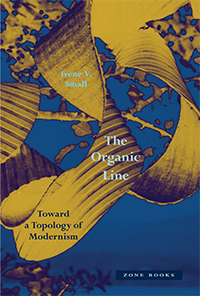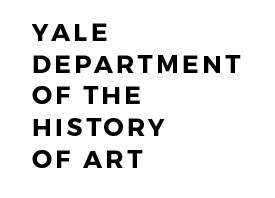Rethinking modernism with ‘The Organic Line’

Rethinking modernism with ‘The Organic Line’
A line in a space can find a multitude of meanings in art.
In her talk on Jan. 22 at Yale University’s Art History Department, Irene V. Small, who specializes in contemporary art and criticism within a global context, examined Brazilian artist Lygia Clark and the fissure of space between material elements in art that Clark labeled “the organic line.” Now an Associate Professor at Princeton, Dr Small completed her PhD at Yale, and made a welcome return to the Department to celebrate the publication of her significant new book The Organic Line: Toward a Topology of Modernism (Zone Books, 2024). Her talk was introduced by Pamela Lee, Carnegie Professor of Modern and Contemporary Art
Department of the History of Art at Yale University.
The “organic line,” explained Small, is “the line of space that appears between a painting and its frame, a door and its lintel, or tiles on the floor and this spatial cavity.” Or, as Small writes in the introduction, “The organic line is a line of space that lies between.”
Rooted in the close reading of Lygia Clark’s subtle, formally complex works, Small’s argument amounts to a manifesto for the reimagining of abstract art and its history in the twentieth century. The concept of the organic line, she contends, has “seismic repercussions,” allowing for a rethinking of “foundational concepts in art such as mark, limit, surface, and edge.”
Small proposed to a large and attentive audience at Yale’s Loria Center that treating the organic line as a conceptual tool allows scholars to analyze and reconfigure the field of modernist art “as a flexible and topological surface, porous to what has exceeded its purview and capable of formation and deformation through critical description and artistic practice alike.”
Small revealed the concept of the organic line emerged when Clark observed in 1954 that when the artist abutted work framing mat with a collage of the same color, a line of space appeared between them.
“She observed the line was liminal, contingent, and that it was found, not made…. She named it the organic line and began to use it as a structuring element in her work.”
The organic line, Small noted, played a significant role in Clark’s painterly and sculptural investigations of the late 1950s and ’60s, as well as the artist’s subsequent explorations of social and therapeutic practice.
An Ovidian agent of metamorphosis, the organic line can “transform planes into flexible topologies, borders into membranes, and interstices into points of connection.”
The elusive character of a “nothingness that otherwise escapes legibility” ensured that the organic line “invites metaphoric elaboration,” she said. “Once recognized as actual, relational, and substantive, the interval of space appears to become a living, organic entity, a breath, a blade, a trace of air, a gutter, and furrow, a void that irrigates and cleaves, a crevice and cleft that differentiates matter and ruptures the plane.”
Employing the organic line has far-reaching consequences, envisioning modernism, she said, “not as a stable construct, defined by centers and peripheries, inclusions and exclusions, but as a topological field of interactive, destabilizing tensions.
“The organic line is constantly flowing between the historical work and into the contemporary space in which we encounter it, said Small. “To me, it’s a portal to the now.”
Small is also the author of a highly-regarded monograph Hélio Oiticica: Folding the Frame (University of Chicago Press, 2016), the first English-language monograph devoted to the pioneering Brazilian artist who worked in Rio de Janeiro, London, and New York from the mid-1950s through the late 1970s.
— Frank Rizzo
